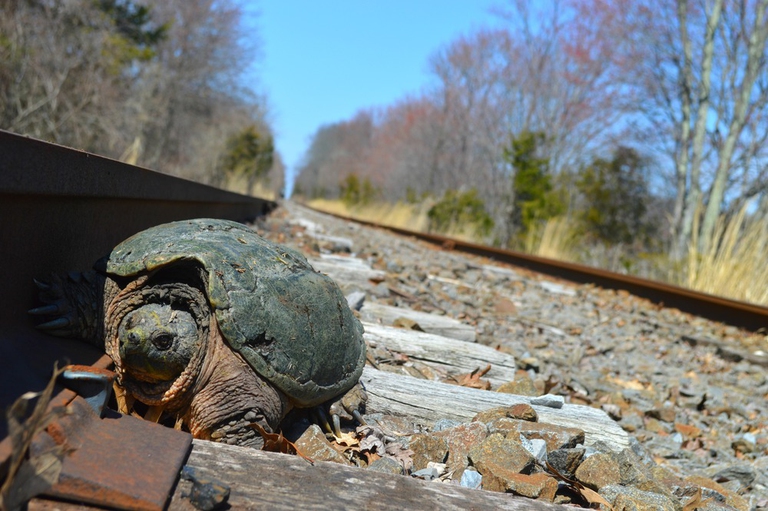
Our species took its first steps in a world covered in trees. Today, forests offer us sustenance, shelter, and clean the air that we breathe.
Una compagnia ferroviaria nipponica ha installato dei tunnel in mezzo ai binari per tutelare l’incolumità dei rettili (e prevenire i ritardi).
Turtles are known for their slowness. However, this peculiarity becomes dangerous when they need to cross railways, jeopardising their own survival and sometimes delaying rail traffic.
In the Nara Prefecture, Japan, a valid way to safeguard turtles has been developed. The West Japan Railway Company has installed tunnels in the middle of tracks in order to allow turtles to cross the rails safely. The underpasses, realised in collaboration with the Suma Aqualife Park of the city of Kobe, are made of concrete dugouts, are placed beneath the track and lead to a pond.
Turtles were responsible for 13 disruptions to train services between 2002 and 2014 by falling into spaces between rail switches. “When the point blades move, unfortunately they get squashed between them and die,” said West Japan Railway spokesman. “They can cause long delays to operations so we consulted with a turtle specialist to find the best way to help them”.
Since the tunnels were completed, 10 turtles have been saved, according to officials. Rail workers regularly control tunnels in search of turtles that need to be rescued. Injured animals are brought to the Suma Aqualife Park to receive care.
“Turtle tunnels” allow reducing reptiles’ mortality, train delays and rail damages. Most of all, they can be implemented in those countries that have railways close to wetlands populated by turtles.
Siamo anche su WhatsApp. Segui il canale ufficiale LifeGate per restare aggiornata, aggiornato sulle ultime notizie e sulle nostre attività.
![]()
Quest'opera è distribuita con Licenza Creative Commons Attribuzione - Non commerciale - Non opere derivate 4.0 Internazionale.
Our species took its first steps in a world covered in trees. Today, forests offer us sustenance, shelter, and clean the air that we breathe.
Poachers in Africa are encroaching on wildlife land and killing rhinos in travel hot spots now devoid of visitors due to the coronavirus pandemic.
Actor and environmental activist Leonardo DiCaprio has contributed two million dollars to a fund to protect Virunga National Park in Congo from threats such as terrorism, the coronavirus and poaching.
For the first time in seventeen years, Iceland’s two main whaling companies won’t resume whale hunting. The announcement concerns this year’s season but could carry into the future.
The relationship between the coronavirus and wildlife is complex: while the pandemic may lead to a reduction in the illegal trade in wild animals, it may also encourage it in other respects.
The largest coral reef in the world is severely threatened by climate change, but researchers are developing strategies that could contribute to saving the Great Barrier Reef.
NGO Free the Bears has opened a mountain sanctuary for moon bears in Laos. With the government’s help, it aims to close all bile farms by 2022.
Seychelles have extended its marine protected area, which now covers over 400,000 square kilometres, an area larger than Germany.
The tapir was reintroduced into Brazil’s Atlantic Forest, the country’s most at-risk ecosystem. The species can play a key role in the forest’s recovery.









